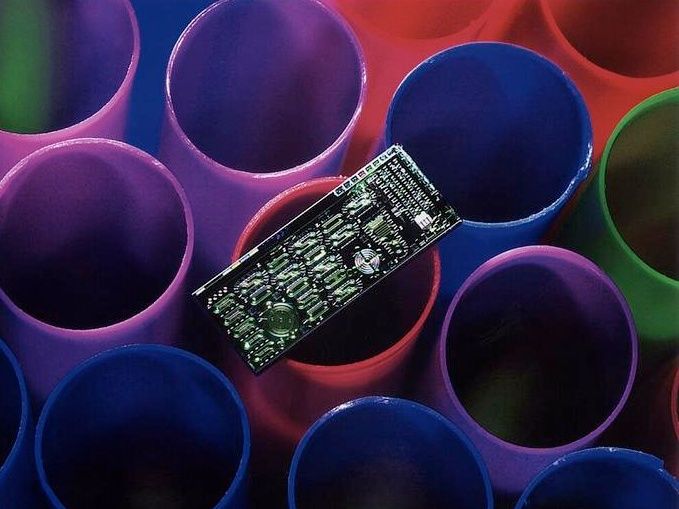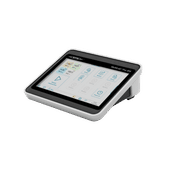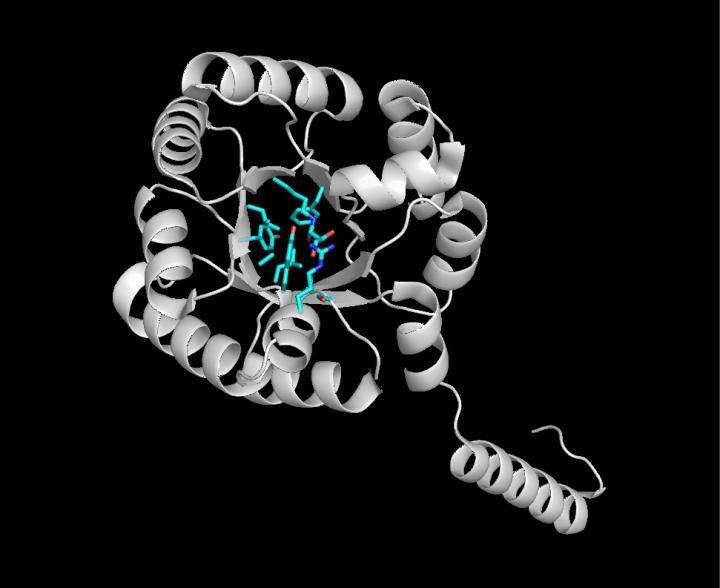The little things matter: Chemists develop new sensor for microvolume pH detection
New environmentally friendly, durable pH sensor is sensitive enough to accurately measure pH variation in just a few microliters of samples
Advertisement
Measuring the pH of substances gives us vital clues about the world around us, such as identifying contaminated water or checking the toxicity of medical or cosmetic products.

A module with eight micro-devices, complete with microfluidic channels and drive motors, resting on top of a soda straw. A microfluidic device typically consists of thousands of channels conducting tiny amounts of fluids for analysis
U.S Department of Energy (Public Domain)
Often, only small amounts of samples are available, but monitoring the variation in pH in these miniscule volumes matters. For example, identifying pH changes within tiny volumes of fluid from single cells can help in the detection of ovarian cancer.
However, the current methods for measuring pH are mainly for bulk solutions and are not sensitive enough or are too fragile to measure small volumes on a commercial scale.
In a recent study published in Microchimica Acta, scientists from Xi'an Jiaotong-Liverpool University, China, have developed a method that overcomes these problems.
Dr Qiuchen Dong, who led the study, says: "Our solution needed to be environmentally friendly, durable, and sensitive enough to accurately measure pH variation in just a few microlitres of samples.
A lack of options
Some commercially available methods used to test pH rely on the subjective decisions of the human eye. For example, using paper strips containing dyes that change colour depending on the pH of the substance relies on people comparing the colour against a scale. This results in significant variation in their answers. Some people may view the colour as pH 7.5, others at 8, for example. This method, therefore, is not sensitive to small pH changes, meaning it's more like a rough guess. Some of the dyes used are also toxic to samples which will affect the pH recorded.
A more sensitive method of measuring pH uses extremely fragile glass electrodes, which are easily broken, so they are usually only used in a laboratory setting.
To solve these problems, Dr Dong and his postgraduate student Weiyu Xiao have used novel materials and methods to create a sensitive yet robust pH sensor.
A new solution
In Dr Dong and Xiao's new pH sensor, fluid samples run through a series of tiny channels (microfluidic channels) and over three highly sensitive electrodes made out of light-responsive layered materials and metals.
"Our solution to the problem relies on developing microfluidic channels and electrodes using photolithography, a method often used in the semiconductor manufacturing industry."
These microfluidic pH sensors can detect minor variations in the number of protons within a substance, which defines the pH. This allows the measurement of pH with excellent accuracy.
Future uses
The team currently has a patent pending for the pH sensor and is developing collaborations with industry developers who will integrate the technology into their lab equipment.
"The success of this study is down to the hard work of my current PhD student, Weiyu Xiao, who was a master's student during this work. It is very impressive to see a student reach such a high level in such a short period. She is a great role model, and I hope other students will be inspired by how much she has achieved.
"The work is also thanks to my previous colleagues, Dr Abdennour Abbas at the University of Minnesota and Dr Yu Lei from the University of Connecticut, who helped me to formulate the ideas for this project and many others."
The team believes that their new sensor will have extensive commercial applications, from aiding the detection of cancers and vector-borne viruses to identifying contamination in soil sprayed with pesticides.
Original publication
Other news from the department science
These products might interest you
Most read news
More news from our other portals
See the theme worlds for related content
Topic world Sensor technology
Sensor technology has revolutionized the chemical industry by providing accurate, timely and reliable data across a wide range of processes. From monitoring critical parameters in production lines to early detection of potential malfunctions or hazards, sensors are the silent sentinels that ensure quality, efficiency and safety.

Topic world Sensor technology
Sensor technology has revolutionized the chemical industry by providing accurate, timely and reliable data across a wide range of processes. From monitoring critical parameters in production lines to early detection of potential malfunctions or hazards, sensors are the silent sentinels that ensure quality, efficiency and safety.




























































